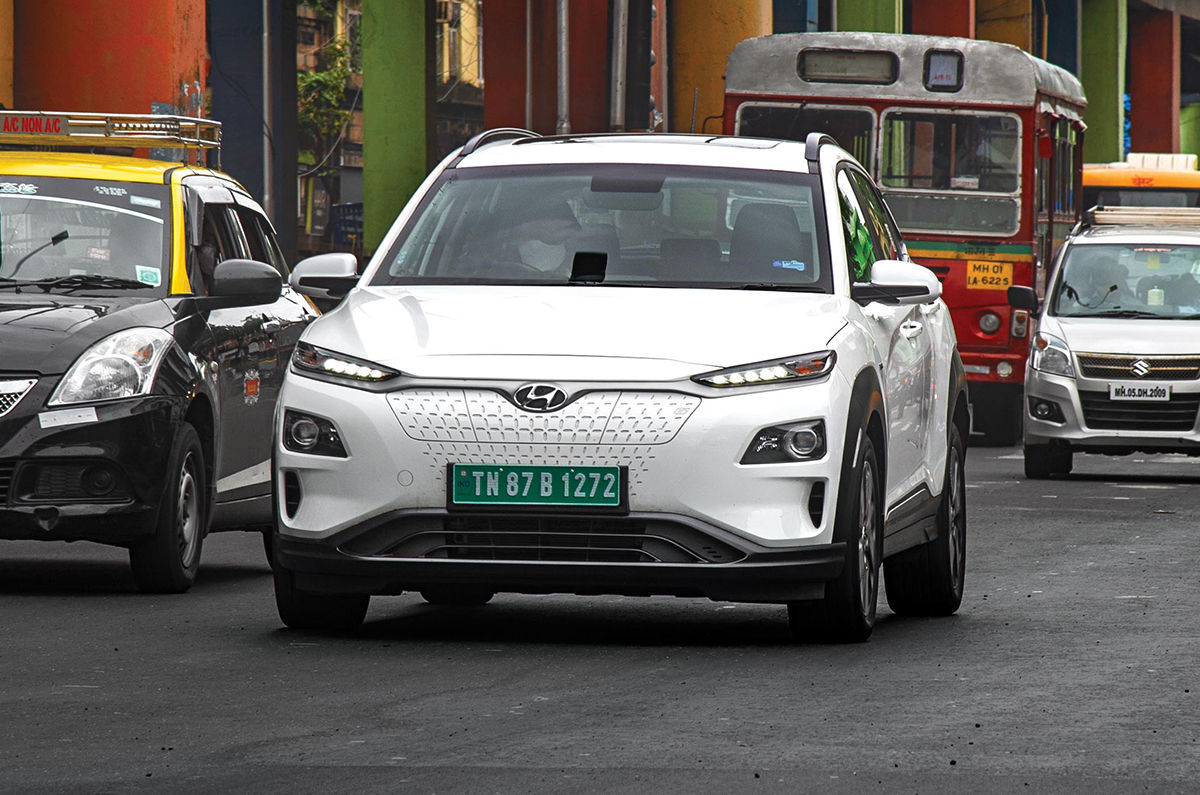Review: Hyundai Kona Electric long term review, third report

I thought the Kona EV would cure me of the Indian obsession with ‘Kitna deti hai?’, but to the contrary, this question has ruled my life for the six months I’ve been living with the car. No, it’s not because of frighteningly high electricity bills, a racket Mumbaikars have been a victim of, but about how many kilometres will I get on a single charge.
The thing is, the absence of a charging network makes range the single biggest limitation that holds back EVs from being all-purpose cars. The fast chargers will come but until then EVs are essentially city cars that need a parking spot with a charging point. Luckily, I have two, one at home and one in the office, which gives me the added flexibility to meet all my commuting needs. As a result, I don’t feel the need to charge at either end every day, in fact there’s enough range to go several days without charging.
I love the way the Kona EV has settled into my daily routine and there’s never been an occasion when I’ve been forced to readjust my schedule because I’m out of juice. The key is to never let the battery charge drop below 50 percent, which in effect always gives me a range of more than 130km.
Using the Hyundai Kona EV as a daily driver for the past six months, I’ve developed an intimate understanding of its 39.2 kWh lithium-ion battery and the rate at which it gets depleted. I know how many kWh will be gulped when I press to the Sport mode button and rocket off the lights. I know how many kWh I can harvest by switching to Eco mode and tugging the left paddle to select level 3, the most aggressive regenerative braking mode. I also know how many kWh go back into the battery after charging it during a full day at office.
Since I can’t be bothered about range or conserving battery life, I’ve indulged myself by sticking to Sport mode, with the regen level set to zero. This combination rewards the driver the most – you get max power and torque from the moment you press the accelerator, with no regeneration (it kicks in from level 1) the brakes feel natural, and when you lift off, the Kona coasts normally. No, I haven’t tried one-pedal driving yet but will give that a shot for the next report.
For now, I’m just loving the hair-trigger pedal response and explosive burst of acceleration, which is very very addictive. I fear I’m going to wear out the front tyres, which chirp for grip, pretty soon. I also love how quiet the Kona EV is and the complete lack of ‘engine’ noise (except for a faint hum from the motor when you decelerate) is quite a soothing experience and actually takes the stress out of a long day at work. What’s stressful is when others can’t hear you, and this lack of noise can be actually be quite dangerous, especially with pedestrians who, in most cases, think they own the road. In fact, the horn is the most important safety device and when tacking the hugely congested Saat Rasta roundabout, where cyclists, handcarts, pick-ups, and people, all converge on the same square centimetre of road as you, my one hand is always resting on the steering’s horn, boss. Other countries have made it mandatory for EVs to be equipped with an alarm that emits a warning sound at low speeds for pedestrians to hear. That’s what we need.
With the Kemps Corner flyover shut for repairs, I experimented using an alternative route via Mumbai Central to get to our Byculla office and back. And it’s on this route I discovered that the Kona EV’s ground clearance is appallingly inadequate for what is a quasi-SUV. Two huge speed breakers made contact with the underbody and put paid to any ideas of using this route regularly. The trouble with EVs is that the battery pack,which is usually placed under the floor, seriously eats into ground clearance.
Ironic, then, that range is not the biggest speed bump for the Kona EV, but a speed bump itself is.
Also see:

No comments
please do not enter any spam link in the comment box